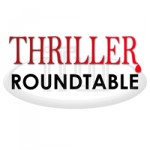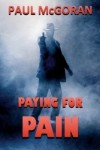

February 1 – 7: “Which matters more – sentence structure or word choice?
 This week ITW Members Paul McGoran, Elizabeth Noble and Carol Goodman are discussing tone. In developing a thriller’s tone, which matters more – sentence structure or word choice?
This week ITW Members Paul McGoran, Elizabeth Noble and Carol Goodman are discussing tone. In developing a thriller’s tone, which matters more – sentence structure or word choice?
~~~~~
 Elizabeth Noble is the author of over a dozen novels including her mystery/thriller/suspense series Circles. Gone Away is the fourth novel in the series. Several of her thrillers take place remote wilderness locations. When she’s not spinning tales of murder and mayhem she’s a veterinary nurse who lives in Cleveland, Ohio with a very spoiled dog and cat. The comment she hears most often from readers is “I didn’t see that coming!”
Elizabeth Noble is the author of over a dozen novels including her mystery/thriller/suspense series Circles. Gone Away is the fourth novel in the series. Several of her thrillers take place remote wilderness locations. When she’s not spinning tales of murder and mayhem she’s a veterinary nurse who lives in Cleveland, Ohio with a very spoiled dog and cat. The comment she hears most often from readers is “I didn’t see that coming!”
 Carol Goodman is the author of fourteen novels, including The Lake of Dead Languages and The Seduction of Water, which won the 2003 Hammett Prize, and, under the pseudonym Juliet Dark, The Demon Lover, which Booklist named a top ten science fiction/fantasy book for 2012. Her YA novel, Blythewood, was named a best young adult novel by the American Library Association. Her books have been translated into sixteen languages. She lives in the Hudson Valley with her family, and teaches creative writing at The New School and SUNY New Paltz.
Carol Goodman is the author of fourteen novels, including The Lake of Dead Languages and The Seduction of Water, which won the 2003 Hammett Prize, and, under the pseudonym Juliet Dark, The Demon Lover, which Booklist named a top ten science fiction/fantasy book for 2012. Her YA novel, Blythewood, was named a best young adult novel by the American Library Association. Her books have been translated into sixteen languages. She lives in the Hudson Valley with her family, and teaches creative writing at The New School and SUNY New Paltz.
 Paul McGoran lives and works in Newport, Rhode Island. His first novel was the noir thriller MADE FOR MURDER. He began writing crime fiction after a long career in marketing. His favorite thing about writing is disappearing into the mind and thoughts of his characters. He is convinced that writers like him have a form of multiple personality disorder–without the alarming clinical symptoms.
Paul McGoran lives and works in Newport, Rhode Island. His first novel was the noir thriller MADE FOR MURDER. He began writing crime fiction after a long career in marketing. His favorite thing about writing is disappearing into the mind and thoughts of his characters. He is convinced that writers like him have a form of multiple personality disorder–without the alarming clinical symptoms.
- LAST GIRL MISSING with K.L. Murphy - July 25, 2024
- CHILD OF DUST with Yigal Zur - July 25, 2024
- THE RAVENWOOD CONSPIRACY with Michael Siverling - July 19, 2024
